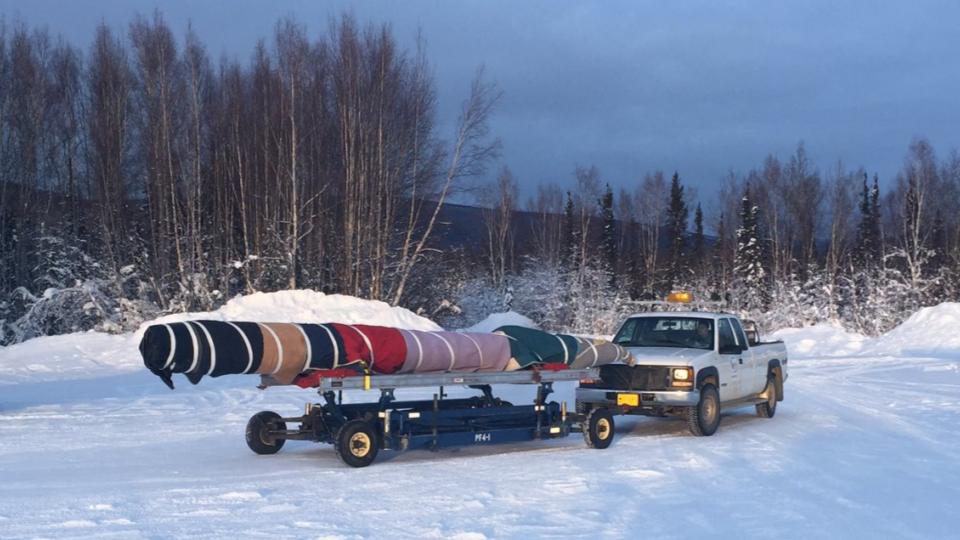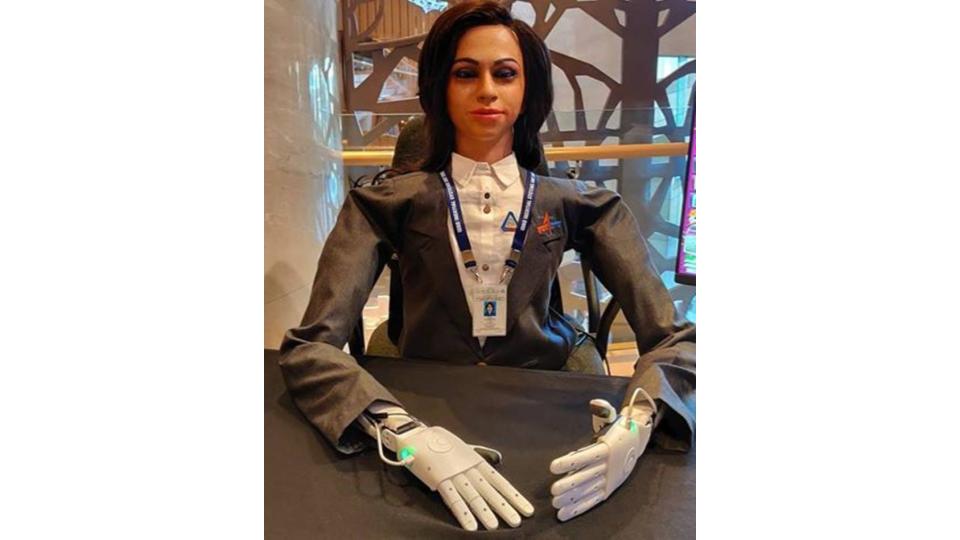Usually Wednesdays are for Rocket Roundup, and today is no different. It’s been a quiet week for spaceflight with only two launches! Annie chats about the PolarNOx and SpaceX launches before introducing India’s new space robot. Unfortunately, she’s also the bearer of bad news from the latest GAO report on JWST: there’s still problems slowing down integration, which means that there are more delays and cost overruns for the project. Usually Wednesdays are for Rocket Roundup, and today is no different.

On January 27 at 1:40 PM UTC, a Canadian-made Black Brant IX sounding rocket launched from Poker Flat Research Range in Alaska. Onboard was the PolarNOx mission.
- NASA Sounding Rocket Observing Nitric Oxide in Polar Night (NASA) https://www.nasa.gov/feature/wallops/2020/nasa-sounding-rocket-observing-nitric-oxide-in-the-polar-night
- NASA Launch @ Poker Flat 1.27.2020 (PI: Bailey) (Poker Flat Rocket Range, YouTube) https://www.youtube.com/watch?v=fyPYJQQf1Kg

Yesterday, Dr Pamela spoke about how cold temperatures can create dangerous conditions for spaceflight. So why in the world would someone choose to launch a rocket just south of the Arctic Circle in the middle of winter? You do what the mission calls for. And this mission, PolarNOx, calls for observing nitric oxide in the atmosphere in polar night. Nitric oxide is formed by aurora, which is the visual phenomenon observed when solar winds interact with our atmosphere and are best observed during those long polar nights. Nitric oxide is also really fragile and breaks down in sunlight. The Principal Investigator, Dr Scott Bailey of Virginia Tech, intends to discover where in the atmosphere nitric oxide settles. To make that happen, you launch a rocket from Alaska in the middle of winter.
The Black Brant IX is a solid fuel rocket, but that doesn’t mean it is impervious to the cold. That solid rocket fuel can actually crack from thermal stress. The crew at Poker Flats did take a few precautions to make sure that the extreme cold didn’t negatively impact the launch, including wrapping the rocket in moving blankets and keeping the rocket inside a custom styrofoam housing with heat before the launch.
——
Per webcast:
- Wrapped in styrofoam to keep temps consistent, can lead to cracking of solid propellant
- Completely ballistic — no steering/guiding once it’s taken off
- Chatting with NORAD, who informs everyone else that IT’S JUST A SCIENCE MISSION OKAY
- 150 miles (~240 km), point it at a star, measure nitric oxide at that point, nitric oxide produced by auroras
- Nitric oxide is easily destroyed by sunlight, but polar night so not an issue
- 60 miles up, not where ozone is, but long lived
- Not a lot of aurora (solar minimum)
- How much and where it is in altitude. Algenab bright in uv. Uv spectrograph on payload.
- Nocturne camera
- 8 minutes from launch to landing; soft landing because of parachute, recover payload but data will already be collected in real time and saved locally
- BOUNTIES FOR ROCKETS!!!! GPS point and report and picture → $600 for small piece, $1200 for large piece
- THEY DRIVE THE ROCKET FROM WALLOPS TO ALASKA
- Blankets are for maintaining temps — preventing temp swings — for fuel and payloads
- THEY HEAT THE FREAKING ROCKET
- Dr Don Hampton, blue plaid shirt
- Rob Prince, red shirt; University of Alaska Fairbanks

Today, SpaceX Falcon 9 launched another 60 satellites into orbit at 2:06 PM UTC from SLC-40 at Cape Canaveral Air Force Station, Florida.
This was the third flight for the booster, which had a successful landing on the droneship Of Course I Still Love You. More good news: Ms. Tree made her third successful fairing catch! The other fairing half made a soft landing in the water and was successfully recovered by Ms Chief.
- Starlink-4 (RocketLaunch Live) https://www.rocketlaunch.live/launch/starlink-4
- Starlink Mission Press Kit for January 27, 2020 (SpaceX, Wayback Machine) https://web.archive.org/web/20200127140014/https://www.spacex.com/sites/spacex/files/starlink_press_kit_jan272020.pdf

Now, on to something else that will eventually be launching from India. As some background, India does plan on sending humans to space by 2022 on their own rockets. Rather than send up animal proxies first, India has decided to take advantage of technology and have created their very own robot astronaut.

Last week at the Human Spaceflight and Exploration symposium the Indian Space Research Organization presented Vyomamitra, a female-presenting half-humanoid robot. She’s considered half-humanoid because she has no legs, but considering that she’ll be strapped into a seat for flight tests, that really isn’t a problem. During a press conference, Vyomamitra shared that she can monitor sensors, manipulate controls, recognize and respond to human astronauts, and even act as a companion to other spacefarers. My Nation goes on to report that she can speak two languages.
- Meet Vyommitra, the robot ISRO is sending to space (The Indian Express) https://indianexpress.com/article/cities/bangalore/meet-vyomamitra-the-robot-isro-is-sending-to-space-6230242/
- Gaganyaan mission: Meet Vyommitra, the talking human robot that Isro will send to space (India Today) https://www.indiatoday.in/science/story/gaganyaan-vyommitra-talking-humanoid-isro-space-1639077-2020-01-22

Finally, something that isn’t going to be launching any time soon.
If you guessed that James Webb Space Telescope encountered another delay, you’re correct!
The United States Government Accountability Office released its annual report on JWST yesterday. The big take-away: JWST most likely not going to launch in March 2021. The report basically says “look, stuff is broken, stuff will break, that takes labor to fix, labor costs drive project costs up.”
There were two new specific technical problems in this report, and they were two separate components of the communications systems. Both the Traveling Wave Tube Amplifier and the command and telemetry processor experienced a power-related anomaly at the same time during testing in March-April 2019. NASA does not believe that the two problems are related and treated them as separate issues.
A Traveling Wave Tube Amplifier (TWTA), is basically a vacuum tube that can produce radio waves across a wide band of frequencies and are components on most comsats. Our resident comsat expert Dave Ballard says that the TWTAs do contain a number of small and sensitive parts, but apparently aren’t very complicated. Most failures are usually the result of power issues or degradation due to age.
The processor anomaly has an unknown cause, but electrical faults were found in a couple of circuit cards. As far as repairs go, the TWTA was replaced and an upgraded processor has been tested and will be the replacement if necessary.
Other known issues that might cause further delays include: deficient bolts, a broken momentum flap, faulty actuator, and potentially weak sunshield membrane retention devices.
There are 501 deficient bolts installed on JWST that don’t meet strength specifications. Testing is being performed to figure out which of these bolts needs to be replaced. These bolts are found to be deficient on *another* Northrop Grumman project, which is probably what triggered the review of the already-installed bolts.
One hundred and eighty actuators are used to deploy the sunshield, which is a thin membrane to help keep the observatory cool. A failure of just ONE of those actuators prevents the whole sunshield from opening. If it doesn’t deploy, JWST is dead in the water. The actuators have redundancies to prevent that from happening. On a test of sunshield deployment, a single actuator was fired by one mechanism instead of two. That’s not how it’s supposed to work and I’m sure there will be an investigation and testing on what went wrong.
In the end, the GAO essentially encouraged integration and testing to occur sooner rather than later, because that’s typically when problems are found in projects of this type and scale. And in order to get any sense of when JWST is going to be launched, the project team needs to know what’s still wrong.
- James Webb Space Telescope: Technical Challenges Have Caused Schedule Strain and May Increase Costs (GAO) https://www.gao.gov/products/GAO-20-224

To wrap things up, here’s a running tally of a few spaceflight statistics for the year:
- Toilets burned up: 0
- Total satellites: 128
- Total launches: 6
- China: 3
- USA: 2
- France: 1
Thank you all for listening. Today’s script was written by Annie Wilson and Dave Ballard. The Daily Space is produced by Susie Murph, and is a product of the Planetary Science Institute, a 501(c)3 non profit dedicated to exploring our Solar System and beyond. We are here thanks to the generous contributions of people like you. Want to become a supporter of the show? Check us out at Patreon.com/cosmoquestx


 We record most shows live, on Twitch. Follow us today to get alerts when we go live.
We record most shows live, on Twitch. Follow us today to get alerts when we go live.